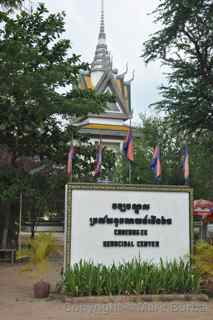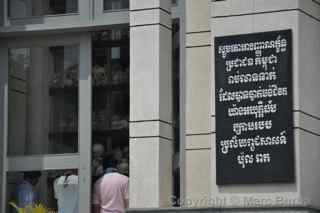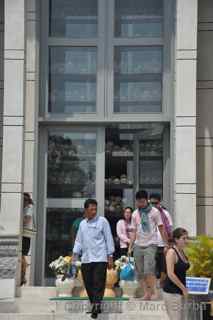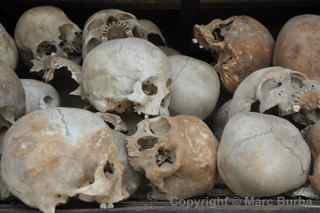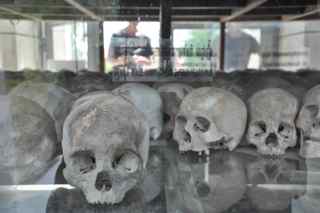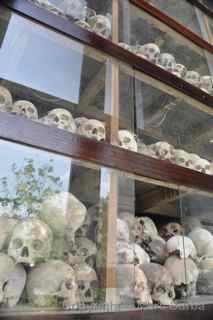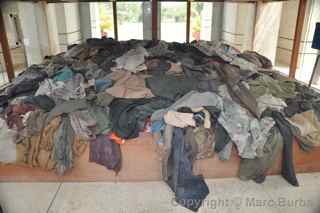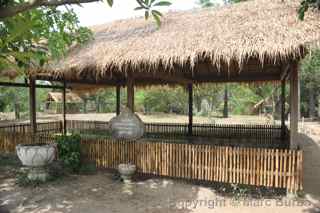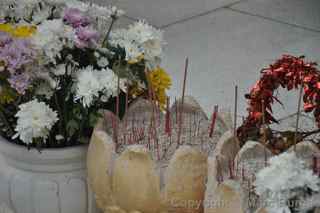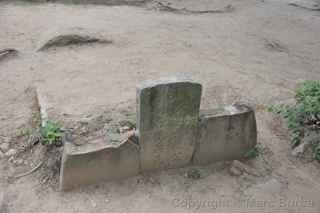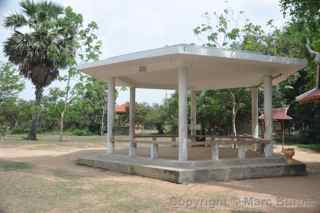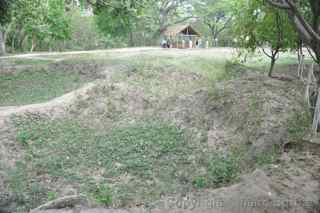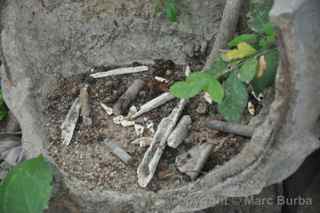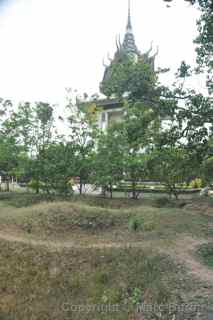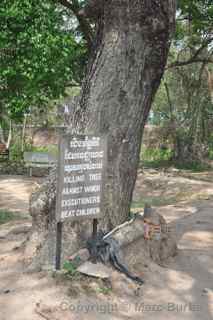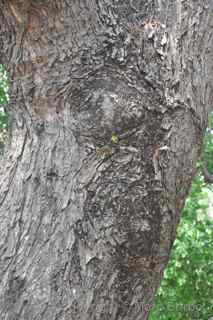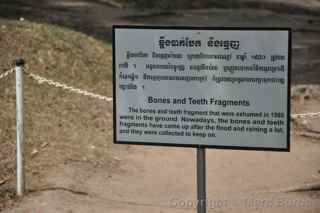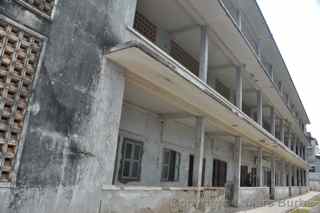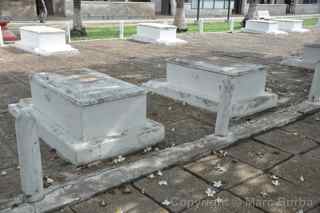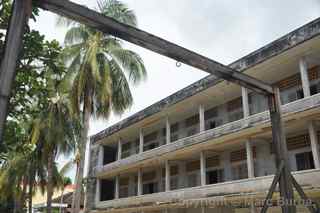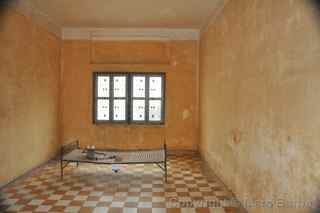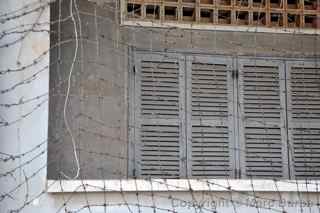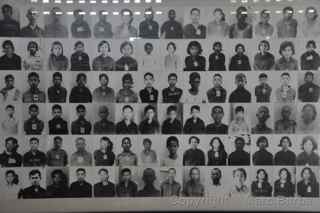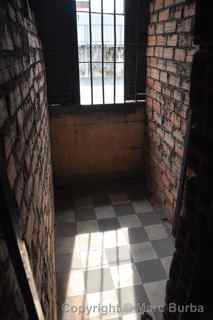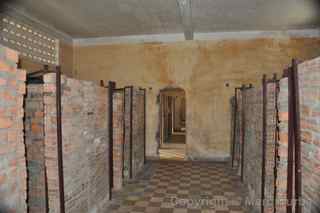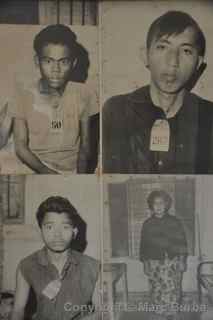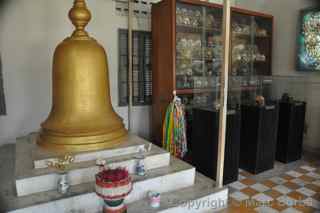Killing fields, Cambodia
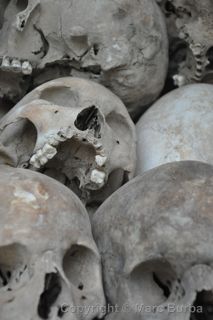 In the former concentration camps still scattered across Europe, most physical traces of the people who died there have been erased. That fact hangs over and haunts each site. In Cambodia, visitors are confronted with the actual remains of genocide victims.
In the former concentration camps still scattered across Europe, most physical traces of the people who died there have been erased. That fact hangs over and haunts each site. In Cambodia, visitors are confronted with the actual remains of genocide victims.
When Pol Pot and his radical Communist Khmer Rouge regime seized control of Cambodia in 1975 after years of uprisings and rebellion, many of the nation’s 7 million people felt the effects of isolationist and genocidal campaigns. The regime sought to smother all religious and foreign influences and to transform the country into an agrarian Communist state. Urban areas including the capital of Phnom Penh were cleared out, with millions of people relocated to agricultural communes of hard labor. Much like the Nazis of World War II Europe, the Khmer Rouge exterminated minorities, religious leaders, and others who disagreed with the regime. Over the next four years, an estimated 1.7 million people either were executed or died of starvation or disease.
Battles against Khmer Communist rebels and eventually a Vietnamese invasion toppled the regime in January 1979, and the atrocities were slowly revealed over the next decade. Pol Pot died in 1998.
Today, the peaceful and still-developing country remembers the victims of the genocide at two main sites of atrocities: the killing fields at Choeung Ek and a former security office in Phnom Penh where thousands of people were detained and tortured.
Choeung Ek
About 10 miles from downtown Phnom Penh is the Choeung Ek killing fields, one of the sites where Cambodians were exterminated during the Pol Pot regime. An estimated 20,000 people were killed here between 1975 and 1978. After the regime’s downfall, 129 mass graves were discovered here; 86, containing nearly 9,000 bodies, have been excavated.
Unlike Auschwitz-Birkenau in Poland, where the emptiness of the site is overpowering, here the remains of many victims are on display as a reminder of the atrocities. Thousands of skulls and other bones have been arranged in a multilevel Buddhist stupa that towers above excavated pits and undisturbed mass graves. It is said that during the rainy season bone fragments and teeth, as well as pieces of clothing, continue to surface from the graves that have not been disturbed. A small museum on site explains Pol Pot’s rise to power, what happened here, and the aftermath.
Tuol Sleng
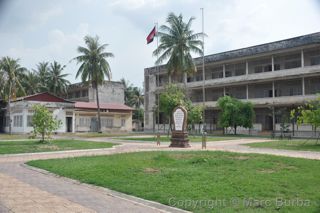 An important component for learning about the Khmer Rouge genocide is the Tuol Sleng Genocide Museum in Phnom Penh. It’s at the site of a former high school that was transformed into the S-21 security office to detain and torture enemies of the regime. Thousands of people were held here over four years, and many were ultimately taken to Choeung Ek to be executed. After the regime’s overthrow, 14 decomposed bodies were found in cells here. They remain entombed on the grounds, which have been preserved to show the cells and the conditions that captives encountered. Many photographs taken from prisoner records are on display showing hundreds of frightened faces of men and women after they were taken into custody. Some photos are displayed next to pictures of the subjects’ dead bodies.
An important component for learning about the Khmer Rouge genocide is the Tuol Sleng Genocide Museum in Phnom Penh. It’s at the site of a former high school that was transformed into the S-21 security office to detain and torture enemies of the regime. Thousands of people were held here over four years, and many were ultimately taken to Choeung Ek to be executed. After the regime’s overthrow, 14 decomposed bodies were found in cells here. They remain entombed on the grounds, which have been preserved to show the cells and the conditions that captives encountered. Many photographs taken from prisoner records are on display showing hundreds of frightened faces of men and women after they were taken into custody. Some photos are displayed next to pictures of the subjects’ dead bodies.

